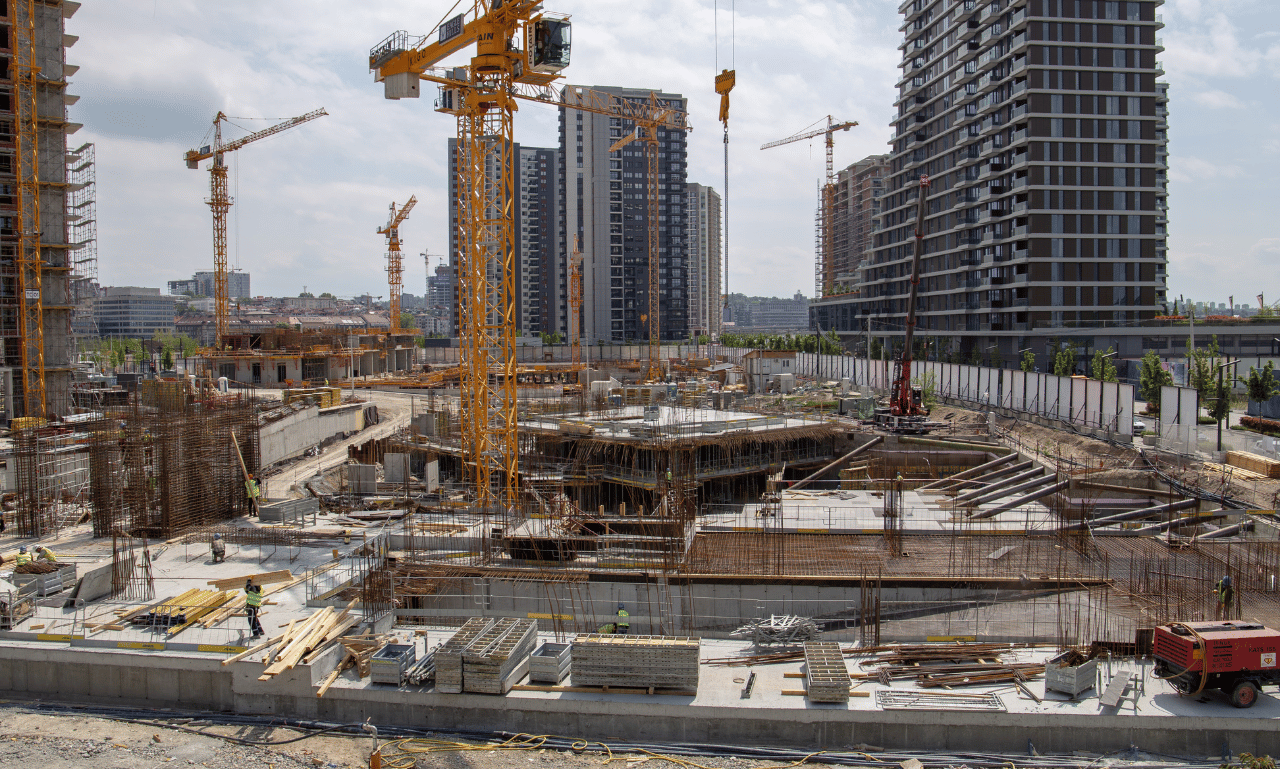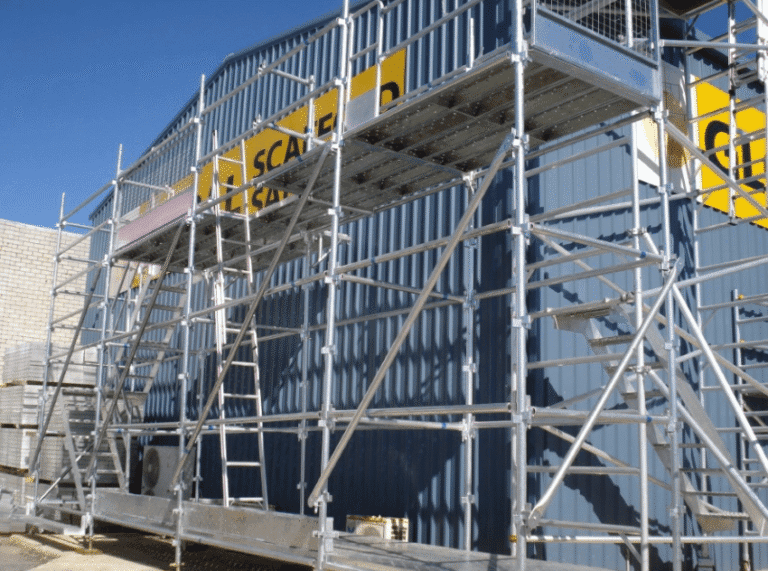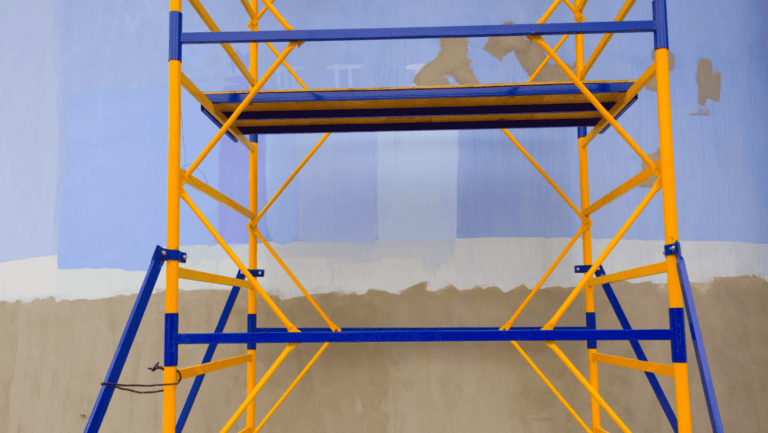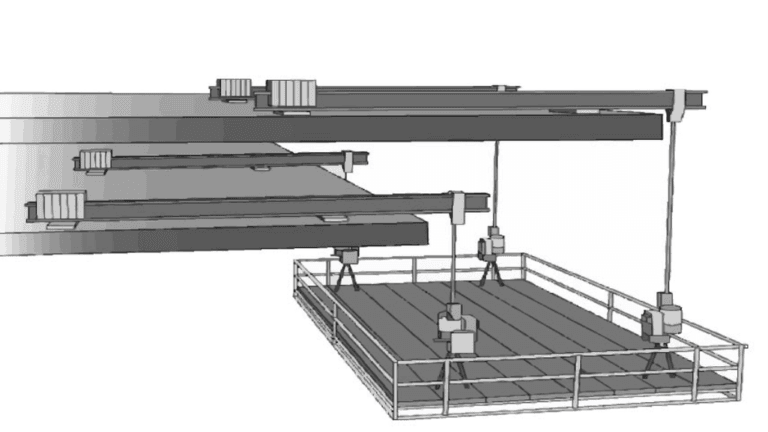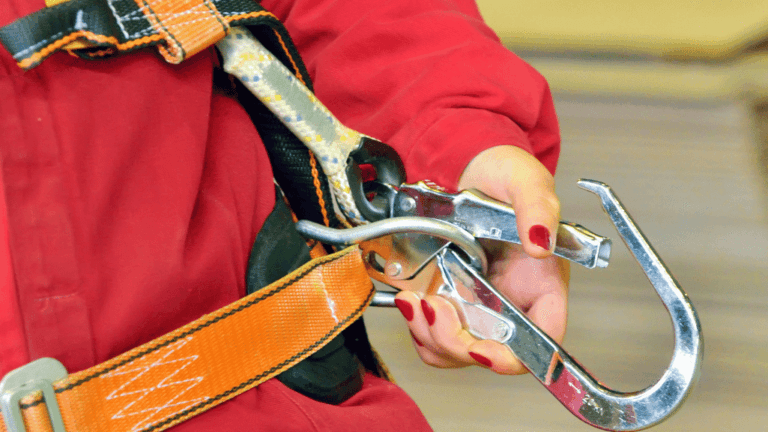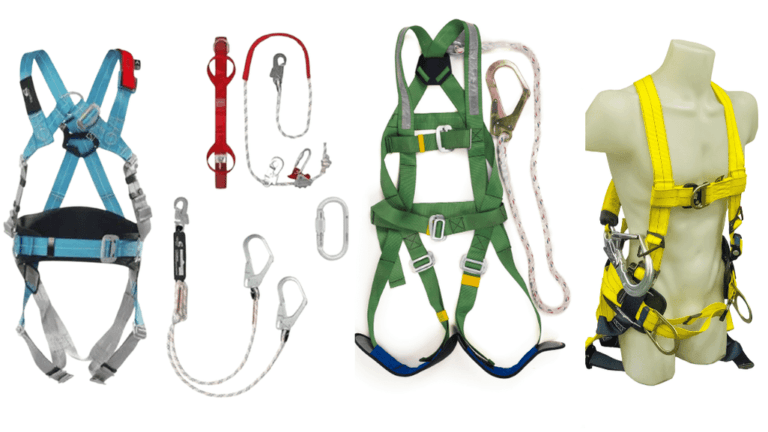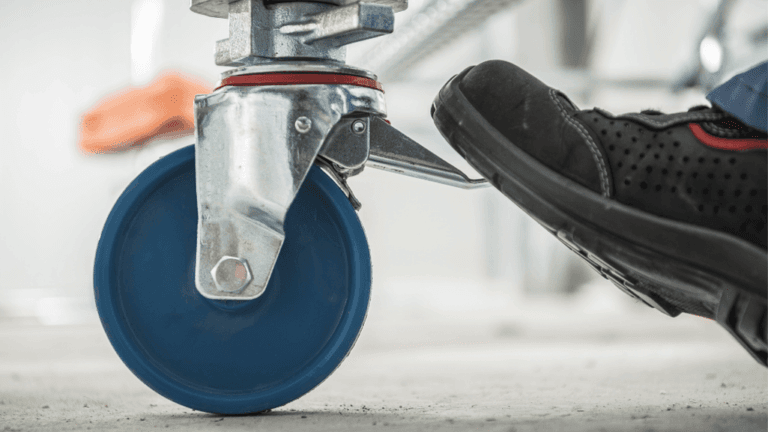Phone:
(+65)8319-0742
Ensuring construction site safety is of utmost importance when working with construction scaffolding. Proper scaffold installation and regular inspections are essential to minimize the risk of accidents and create a safe working environment. In this section, we will explore the key safety tips to follow when managing construction scaffolding on your worksite.
Key Takeaways:
- Proper scaffold installation is crucial for stability and safety.
- Regular inspections help identify potential issues or hazards with scaffolding.
- Follow safety measures, such as using personal protective equipment and practicing safe behavior, when working on scaffolds.
- Choose reliable scaffolding suppliers to ensure the quality and safety of the equipment.
- Understand scaffold design considerations, including load capacity and structural integrity, to ensure stability.
Understanding Construction Scaffolding
Before diving into safety tips, it is important to have a solid understanding of construction scaffolding. This section will provide an overview of different types of scaffolding, their uses in industrial settings, and considerations when renting or designing scaffolds.
Types of Construction Scaffolding
Construction scaffolding comes in various types, each with its own unique features and applications. The choice of scaffolding depends on the specific needs of the project and the working environment.
- Supported Scaffolding: The most common type of scaffolding, supported scaffolds consist of vertical load-bearing members supported by the ground or other structures.
- Suspended Scaffolding: Suspended scaffolds are primarily used for tasks such as window cleaning or painting high-rise buildings. They are suspended from the top of the structure and are accessed by workers using rope systems or powered platforms.
- Mobile Scaffolding: Also known as rolling scaffolding, mobile scaffolds are equipped with wheels to provide mobility. They are ideal for projects that require workers to move frequently between different work areas.
Industrial Scaffolding
Industrial scaffolding is specifically designed to meet the requirements of heavy-duty applications in industrial settings. It is robust, durable, and capable of withstanding harsh conditions.
Industrial scaffolding is commonly used in industries such as oil and gas, petrochemical, power plants, and construction. It provides a safe and stable platform for workers to carry out tasks at height, ensuring productivity and efficiency.
Scaffold Rental and Design
When it comes to construction scaffolding, two important considerations are rental and design.
Renting scaffolding can be a cost-effective solution for short-term projects or when there is a lack of resources to invest in purchasing scaffolds. It allows construction companies to access the required scaffolding equipment without the long-term financial commitment.
On the other hand, scaffold design plays a crucial role in ensuring the safety and structural integrity of the scaffold. Proper design takes into account factors such as load capacity, stability, and adaptability to different worksites.
| Type of Scaffolding | Common Uses |
|---|---|
| Supported Scaffolding | Building construction and maintenance, exterior renovation |
| Suspended Scaffolding | High-rise building maintenance, window cleaning, painting |
| Mobile Scaffolding | Projects with frequent movement requirements, interior renovation |
Scaffold Installation Best Practices
Proper installation is crucial for ensuring the stability and safety of scaffolding on construction sites. By following best practices, you can minimize the risk of accidents and create a secure working environment. In this section, we will discuss the key steps and safety measures for scaffold installation, including:
- Foundation Preparation: Before starting the installation process, it is essential to ensure a solid foundation. This involves examining the ground for stability, removing any obstructions or debris, and leveling the surface if necessary. A properly prepared foundation provides a strong base for the scaffold structure and prevents instability during use.
- Correct Assembly: Proper assembly of scaffolding components is crucial for both safety and functionality. Each frame, brace, and platform should be securely connected using appropriate connectors and fasteners. Following the manufacturer’s instructions and guidelines is essential to ensure that the scaffold is structurally sound.
- Safety Measures: Implementing safety measures during scaffold installation is vital to prevent accidents. Some key safety practices include using proper personal protective equipment (PPE), securing the scaffold against tipping or collapse, and providing adequate guardrails and toe boards for fall protection.
- Stability Checks: Regular stability checks are necessary during the installation process to identify any potential weaknesses or signs of instability. This includes verifying the plumbness, levelness, and alignment of the scaffold structure. Any issues should be promptly addressed to ensure a safe working platform.
- Expert Guidance: If you are unfamiliar with scaffold installation or have complex requirements, it is advisable to seek expert guidance from professional scaffolding suppliers or contractors. They can provide valuable insights and ensure that the scaffold is installed correctly and safely.
By following these scaffold installation best practices, you can enhance construction site safety, minimize the risk of accidents, and ensure the stability and functionality of the scaffold structure.
Importance of Regular Scaffold Inspections
Regular scaffold inspections are crucial for maintaining construction site safety and ensuring the integrity of industrial scaffolding. By conducting regular inspections, potential issues and hazards can be identified and addressed promptly, reducing the risk of accidents and injuries.
During scaffold inspections, it is important to thoroughly examine all components of the scaffold system. This includes checking for any signs of wear and tear, damage, or improper installation. Inspectors should pay close attention to key areas such as the base, joints, platforms, guardrails, and access points.
- Inspect the base: Ensure that the scaffold is set on a stable and level surface. Check for any signs of settling, sinking, or shifting.
- Examine joints: Inspect the connections between scaffold components for tightness and secure fastening. Look for any signs of loose bolts or missing parts.
- Check platforms: Verify that scaffold platforms are free from debris, slippery substances, and any obstructions. Ensure that the platforms are properly attached and have sufficient weight-bearing capacity.
- Assess guardrails: Inspect guardrails for stability and proper height. Ensure that all guardrails are securely fastened and provide adequate fall protection.
- Evaluate access points: Check ladders, stairs, or other means of access to the scaffold for stability and proper installation. Verify that they are free from defects and provide safe access to the scaffold platforms.
In addition to inspecting the physical structure of the scaffold, inspectors should also assess the surrounding environment for potential safety hazards. This includes checking for overhead obstructions, electrical hazards, and proper signage.
If any issues or hazards are identified during the inspection, they should be addressed promptly. This may involve repairing or replacing damaged components, reinforcing weak connections, or implementing additional safety measures.
Benefits of Regular Scaffold Inspections
Regular scaffold inspections offer several key benefits:
- Enhanced safety: Inspections help identify and address safety hazards, reducing the risk of accidents and injuries on construction sites.
- Compliance with regulations: Regular inspections ensure that scaffolding systems meet the required safety standards and comply with relevant regulations.
- Cost savings: Identifying and addressing potential issues early on can prevent more significant damage and the need for costly repairs or replacements.
- Peace of mind: By conducting regular inspections, construction site managers and workers can have peace of mind knowing that their scaffolding systems are safe and reliable.
Therefore, it is imperative to prioritize regular scaffold inspections as part of construction site safety protocols. By doing so, construction companies can create a safer work environment and minimize the risks associated with industrial scaffolding.
| Key Factors to Consider during Scaffold Inspections | Action Steps |
|---|---|
| Inspect scaffold structure | Thoroughly examine all components for signs of wear, damage, or improper installation |
| Evaluate scaffold platforms | Check for debris, structural integrity, weight-bearing capacity, and obstruction-free platforms |
| Assess guardrails | Ensure stable and properly installed guardrails with sufficient height for fall protection |
| Examine access points | Verify stability and proper installation of ladders, stairs, or other means of access |
| Inspect surrounding environment | Check for overhead obstructions, electrical hazards, and proper signage |
Key Safety Measures for Working on Scaffolds
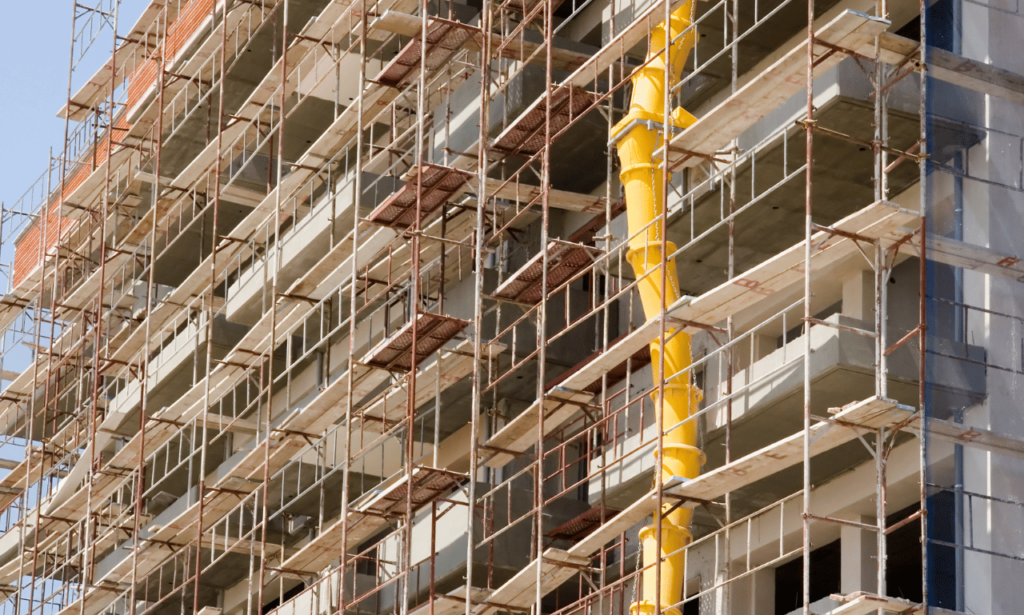
When it comes to working on scaffolds, ensuring construction site safety is of utmost importance. Following key safety measures can significantly reduce the risk of accidents and injuries. This section will outline the essential practices that workers should follow when working on scaffolds, including:
- Use of Personal Protective Equipment (PPE): All workers should wear appropriate PPE, such as hard hats, safety harnesses, non-slip footwear, and high-visibility clothing, to minimize the risk of head injuries, falls, and visibility-related accidents.
- Proper Positioning: It is crucial to ensure that the scaffold is correctly positioned and stable before starting any work. The foundation should be solid, level, and capable of supporting the load, and the scaffold should be erected according to the manufacturer’s instructions.
- Safe Behavior: Workers should follow safe behavior guidelines, including avoiding sudden movements or excessive weight shifts that can destabilize the scaffold. Additionally, clear communication among team members is essential to prevent accidents caused by miscommunication or improper coordination.
Scaffold Safety Checklist
To help ensure compliance with safety standards and minimize risks, use this scaffold safety checklist:
| Checklist Item | Yes | No |
|---|---|---|
| All workers wearing appropriate PPE? | ||
| Scaffold properly positioned and stable? | ||
| Scaffold erected according to manufacturer’s instructions? | ||
| Clear communication and coordination among workers? |
By diligently following these safety practices and using the scaffold safety checklist, construction site workers can ensure their own well-being and actively contribute to maintaining construction site safety.
Choosing Reliable Scaffolding Suppliers
When it comes to construction scaffolding, selecting a trustworthy supplier is paramount. The quality and safety of your scaffolding equipment depend on it. To help you make an informed decision, here are some essential tips:
Evaluate Experience and Reputation
Look for scaffolding suppliers with a proven track record and extensive experience in the industry. Reputation speaks volumes about their reliability and commitment to delivering high-quality products. Check online reviews and ask for references to get a sense of their reputation among industry professionals.
Assess Product Quality
The scaffolding equipment you receive should meet and exceed safety standards. Evaluate the supplier’s product quality by assessing the materials used, testing procedures, and compliance with relevant regulations. Opt for suppliers who offer products from reputable manufacturers known for their reliability and durability.
Consider Additional Services
Some scaffolding suppliers go the extra mile by providing additional services that can enhance your construction project. Look for suppliers who offer services such as on-site delivery, scaffold erection and dismantling, and maintenance support. These value-added services can save you time and effort, ensuring a smooth process from start to finish.
Compare Prices and Terms
While price shouldn’t be the sole determining factor, it’s important to compare prices and terms from different scaffolding suppliers. Request detailed quotes that include all relevant costs, such as delivery fees and any additional services. Consider the overall value provided by each supplier, taking into account their reputation, product quality, and additional services.
By carefully considering these factors, you can choose a reliable scaffolding supplier that prioritizes safety, quality, and customer satisfaction. Now, let’s take a look at the data below for a side-by-side comparison of three leading scaffolding suppliers:
| Supplier | Experience | Product Range | Customer Reviews |
|---|---|---|---|
| ABC Scaffolding | Over 20 years | Wide range including steel, aluminum, and modular systems | 4.5/5 stars |
| XYZ Scaffolds | 10 years | Specializes in aluminum and lightweight scaffolding | 4/5 stars |
| 123 Scaffold Solutions | 15 years | Full range of scaffolding systems for various applications | 5/5 stars |
As you can see from the table, all three suppliers have considerable experience and offer a range of scaffolding products. However, 123 Scaffold Solutions stands out with its exceptional customer reviews, making it a top contender for your scaffolding needs.
Remember, choosing reliable scaffolding suppliers is a critical decision that directly impacts the safety and success of your construction project. Take the time to research and evaluate suppliers to ensure you make the right choice.
Understanding Scaffold Design Considerations
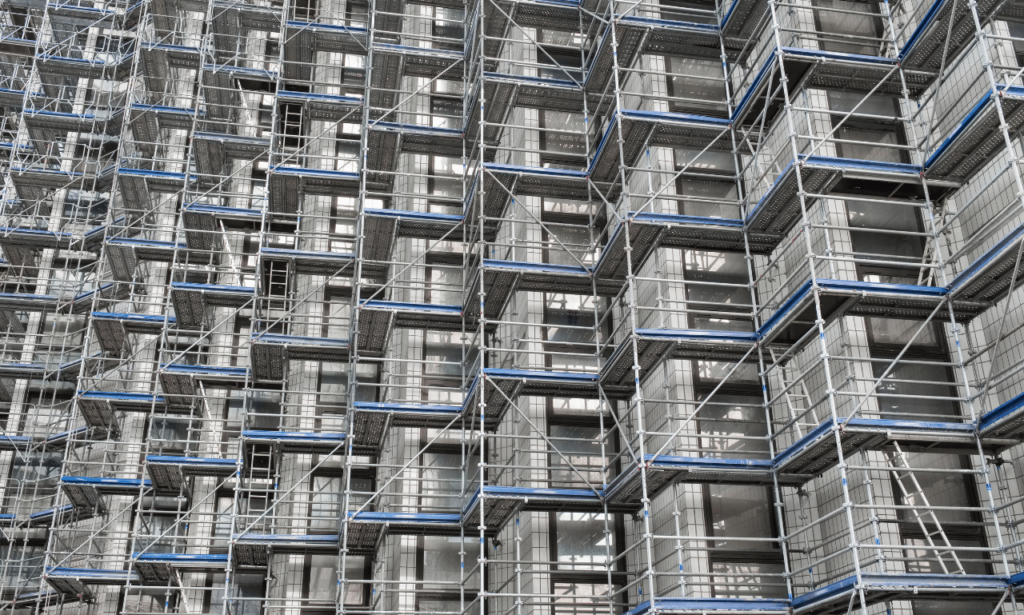
When it comes to construction scaffolding, proper design is essential to ensure the stability and safety of the structure. Whether it’s for a temporary project or a long-term construction site, understanding the key considerations in scaffold design is crucial. By taking into account factors such as load capacity, structural integrity, and adaptability to different worksites, you can create a scaffold system that meets the specific requirements of your project.
One important aspect to consider in scaffold design is load capacity. This refers to the maximum weight that the scaffold can safely support. It is crucial to accurately calculate the load capacity based on the intended use of the scaffold, considering factors such as the weight of workers, tools, materials, and any additional loads that may be imposed. Overloading a scaffold can lead to structural failure and pose significant risks to workers and the surrounding area.
Structural integrity is another vital consideration in scaffold design. The scaffold must be constructed using high-quality materials and in compliance with industry standards and regulations. Each component of the scaffold, including frames, braces, platforms, and connections, should be designed to withstand the anticipated loads and provide stability and durability. Regular inspections and maintenance are crucial to ensure the ongoing structural integrity of the scaffold throughout its lifespan.
Additionally, scaffold design should also prioritize adaptability to different worksites. Construction projects often involve working in various environments with different layouts and requirements. Scaffold systems should be designed to allow easy adjustment and customization to suit the specific needs of each worksite. This flexibility ensures that workers can safely access all areas while accommodating any site-specific challenges or constraints.
Scaffold Design Considerations
| Consideration | Description |
|---|---|
| Load Capacity | The maximum weight the scaffold can support without compromising safety. |
| Structural Integrity | The use of high-quality materials and adhering to industry standards to ensure stability and durability. |
| Adaptability | The ability to customize the scaffold to suit different worksite layouts and requirements. |
By considering these factors during scaffold design, you can create a safe and reliable system that meets the specific needs of your construction project. It is crucial to collaborate with experienced scaffold designers and engineers to ensure compliance with safety standards and regulations. Prioritizing scaffold design considerations will not only enhance the safety of your workers but also contribute to the overall efficiency and productivity of the construction process.
Calculating Scaffold Rental Costs
Renting scaffolding is a cost-effective solution for many construction projects. To effectively budget for your scaffolding needs, it’s important to understand the factors that influence scaffold rental costs. By considering these factors and calculating the expenses associated with renting scaffolding, you can make informed decisions and optimize your project’s budget.
Factors Influencing Scaffold Rental Costs
- Scaffolding Type: Different types of scaffolding have varying rental costs. For example, basic frame scaffolding tends to be more affordable compared to specialized systems like suspended scaffolding.
- Project Duration: The length of time you require the scaffolding will impact the rental costs. Longer projects may qualify for discounted rates, while shorter projects may have higher daily or weekly rental charges.
- Height and Size Requirements: The height and size of the scaffolding necessary for your project will affect the rental costs. Taller scaffolding structures or scaffolds that cover larger areas may be more expensive to rent.
- Additional Accessories: If you need additional accessories such as outriggers, guardrails, or safety netting, these will add to the rental costs. Make sure to factor in any extra equipment needs when calculating your expenses.
- Delivery and Pickup Charges: The cost of delivering the scaffolding to your construction site and picking it up after the project is completed should be considered. These charges can vary depending on the distance and accessibility of your project location.
Calculating Scaffold Rental Expenses
To calculate the scaffold rental cost for your project, follow these steps:
- Identify the scaffolding type and determine the rental cost per unit of measurement (e.g., per square foot, per section, per week).
- Determine the total area or length of scaffolding required for your project.
- Multiply the rental cost per unit by the total area or length to calculate the base rental cost.
- Add any additional charges for accessories, delivery, and pickup to the base rental cost.
Here’s an example to illustrate the calculation:
| Scaffolding Type | Rental Cost per Week | Total Area | Accessories | Delivery and Pickup | Total Scaffold Rental Cost |
|---|---|---|---|---|---|
| Frame Scaffolding | $100 | 500 square feet | $50 | $100 | $650 |
By considering the factors that influence scaffold rental costs and following the calculation process, you can effectively budget for your construction project and ensure that you have the necessary scaffolding at a reasonable expense.
Temporary Scaffolding and Its Applications

Temporary scaffolding plays a crucial role in construction projects, providing a safe and efficient working platform at various stages of the building process. Let’s explore some of the common applications of temporary scaffolding and the specific safety considerations associated with each.
1. Construction and Renovation
In construction and renovation projects, temporary scaffolding is used to provide workers with safe access to elevated areas as they build or repair structures. It allows tradespeople to work at height, ensuring they can perform tasks such as painting, plastering, or installing fixtures with ease. The versatility of temporary scaffolding makes it ideal for both small-scale residential projects and large-scale commercial developments.
2. Maintenance and Repairs
Scaffolding is also widely used for maintenance and repair work, both indoors and outdoors. Whether it’s servicing HVAC systems, cleaning windows, or repairing roofs, temporary scaffolding offers a stable platform for workers to perform their tasks efficiently and securely. By utilizing scaffolding, maintenance crews can access inaccessible areas without compromising safety or causing damage to the existing structure.
3. Industrial Applications
Temporary scaffolding finds extensive use in industrial settings, such as manufacturing plants, factories, and power plants. These environments often require specialized scaffolding systems designed to withstand heavy loads and provide access to equipment and machinery for installation, maintenance, or inspection purposes. Properly installed and inspected scaffolding ensures the safety of workers and enables them to carry out their duties with precision.
4. Event and Entertainment Industry
In addition to construction and industrial applications, temporary scaffolding is a common feature in the event and entertainment industry. Whether it’s staging for concerts, grandstands for sporting events, or platforms for outdoor performances, the versatility and flexibility of scaffolding systems allow for unique design solutions that meet the specific requirements of each event.
Now that we have explored the various applications of temporary scaffolding, it is important to highlight the safety considerations that must be prioritized when working with scaffolding. Adhering to proper installation, regular inspections, and following safety guidelines are imperative to create a secure working environment for all workers involved.
| Application | Safety Considerations |
|---|---|
| Construction and Renovation | – Ensure proper base and foundation stability – Secure scaffolding to prevent movement or collapse – Provide adequate guardrails and fall protection systems – Regularly inspect scaffolding for signs of wear or damage |
| Maintenance and Repairs | – Conduct thorough site assessments to identify potential risks – Take precautions to protect workers from falling objects – Train workers on proper scaffold usage and safety protocols – Monitor weather conditions and adjust safety measures accordingly |
| Industrial Applications | – Use scaffolding systems with appropriate load-bearing capacity – Conduct load calculations and ensure even weight distribution – Implement anti-slip measures to prevent accidents – Provide adequate lighting and signage for safe navigation |
| Event and Entertainment Industry | – Consider crowd control and provide barriers and access control measures – Ensure stability of temporary structures in outdoor environments – Conduct thorough safety checks before, during, and after events – Train event staff on emergency procedures and evacuation routes |
By understanding the applications of temporary scaffolding and the associated safety considerations, construction professionals can ensure the successful execution of projects while prioritizing the well-being of workers and minimizing potential risks. Implementing comprehensive safety protocols and adhering to industry best practices are essential for maintaining a safe working environment on construction sites.
Maintaining Scaffold Safety Standards
Sustaining scaffold safety standards should be an ongoing priority on any construction site. By consistently following safety protocols, you can ensure a safe working environment and minimize the risk of accidents or injuries. This section provides guidance on how to maintain scaffold safety standards effectively.
Regular Training
One of the key aspects of maintaining scaffold safety standards is providing regular training for all workers involved in scaffold installation, use, and inspection. Training should cover essential topics such as proper assembly, fall protection measures, hazard identification, and emergency protocols. By keeping workers updated on the latest safety guidelines and practices, you can enhance their awareness and promote a culture of safety.
Enforcement of Safety Rules
Enforcing safety rules is crucial for maintaining scaffold safety standards. Clearly communicate safety expectations to workers, contractors, and subcontractors, and ensure that everyone follows the established safety protocols. This includes wearing personal protective equipment (PPE), adhering to weight limits, using fall protection systems, and reporting any safety concerns or violations promptly. Regular audits and monitoring can help identify and address non-compliance issues.
Fostering a Culture of Safety Awareness
Creating a culture of safety awareness is essential for maintaining scaffold safety standards. Encourage open communication and active participation from all team members regarding safety concerns, suggestions, and incident reporting. Foster a supportive and collaborative environment where safety is prioritized above all else. Regular toolbox talks or safety meetings can serve as platforms to address safety-related topics, share best practices, and reinforce the importance of adhering to safety guidelines.
Remember, maintaining scaffold safety standards requires continuous effort and commitment from everyone involved in the construction project. By prioritizing regular training, enforcing safety rules, and fostering a culture of safety awareness, you can ensure the well-being of workers on-site and create a safe working environment.
Conclusion
In conclusion, proper safety measures and proactive management of construction scaffolding are crucial for creating a safe working environment on construction sites. By following the essential safety tips and guidelines provided in this article, you can ensure the well-being of workers and minimize the risks associated with construction scaffolding.
Implementing thorough scaffold installations, regular scaffold inspections, and the use of temporary scaffolding where appropriate are key components of maintaining a safe construction site. It is important to choose reliable scaffolding suppliers who provide high-quality equipment and prioritize safety.
Additionally, understanding scaffold design considerations, calculating scaffold rental costs, and maintaining scaffold safety standards are essential in ensuring the stability and safety of scaffold structures. By adhering to these practices, you can protect the well-being of workers and prevent accidents and injuries.
Remember, construction scaffolding plays a vital role in many construction projects, providing a secure elevated platform for workers to carry out their tasks. By prioritizing safety, you can create a work environment that promotes productivity, efficiency, and the well-being of all individuals involved.
FAQ
What are the essential construction scaffolding safety tips?
The essential safety tips for construction scaffolding include proper installation, regular inspections, following key safety measures when working on scaffolds, choosing reliable scaffolding suppliers, understanding scaffold design considerations, calculating scaffold rental costs, understanding the applications of temporary scaffolding, and maintaining scaffold safety standards.
What is construction scaffolding used for?
Construction scaffolding is used to provide a temporary structure and platform for workers to perform tasks at elevated heights. It ensures safety and accessibility during construction or maintenance projects.
How important is scaffold installation?
Scaffold installation is crucial for the stability and safety of the structure. Proper installation involves ensuring a solid foundation, correct assembly, and following safety measures to prevent accidents during the installation process.
Why are regular scaffold inspections important?
Regular scaffold inspections are important to identify any potential issues or hazards with scaffolding. They help to ensure the safety of workers and prevent accidents by addressing any problems that may arise.
What are the key safety measures for working on scaffolds?
When working on scaffolds, key safety measures include wearing personal protective equipment, positioning oneself correctly on the scaffold, following safe behavior and practices, and maintaining a clean and clutter-free work area.
How do I choose reliable scaffolding suppliers?
When choosing scaffolding suppliers, it is important to consider their experience, reputation, and the quality of their products. It is recommended to research and compare different suppliers to ensure reliability and the safety of the equipment.
What are the considerations for scaffold design?
Scaffold design considerations include load capacity, structural integrity, adaptability to different worksites, and compliance with safety regulations. Designing scaffolds with these factors in mind ensures their stability and safety.
How can I calculate scaffold rental costs?
Scaffold rental costs are influenced by factors such as the duration of rental, the type and quantity of scaffolding required, additional accessories or equipment, and transportation costs. It is recommended to reach out to scaffolding rental companies for detailed quotes and cost calculations.
What are the applications of temporary scaffolding?
Temporary scaffolding is used in various construction projects, such as building maintenance, renovation, painting, and installing utilities. It provides a safe working platform for workers at elevated heights.
How can I maintain scaffold safety standards?
Maintaining scaffold safety standards requires regular training for workers, enforcement of safety rules and protocols, conducting regular scaffold inspections, and creating a culture of safety awareness among all construction site personnel.

